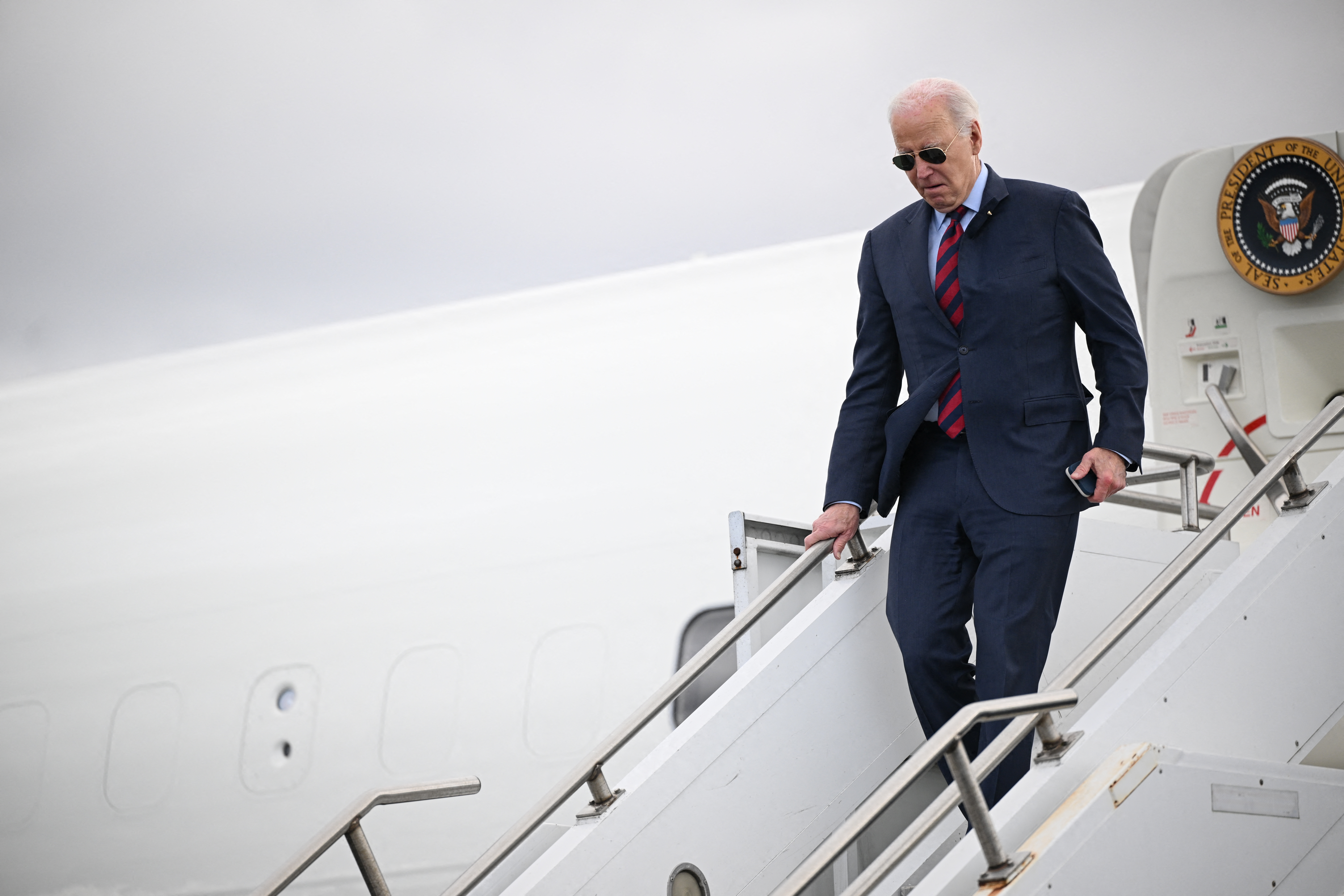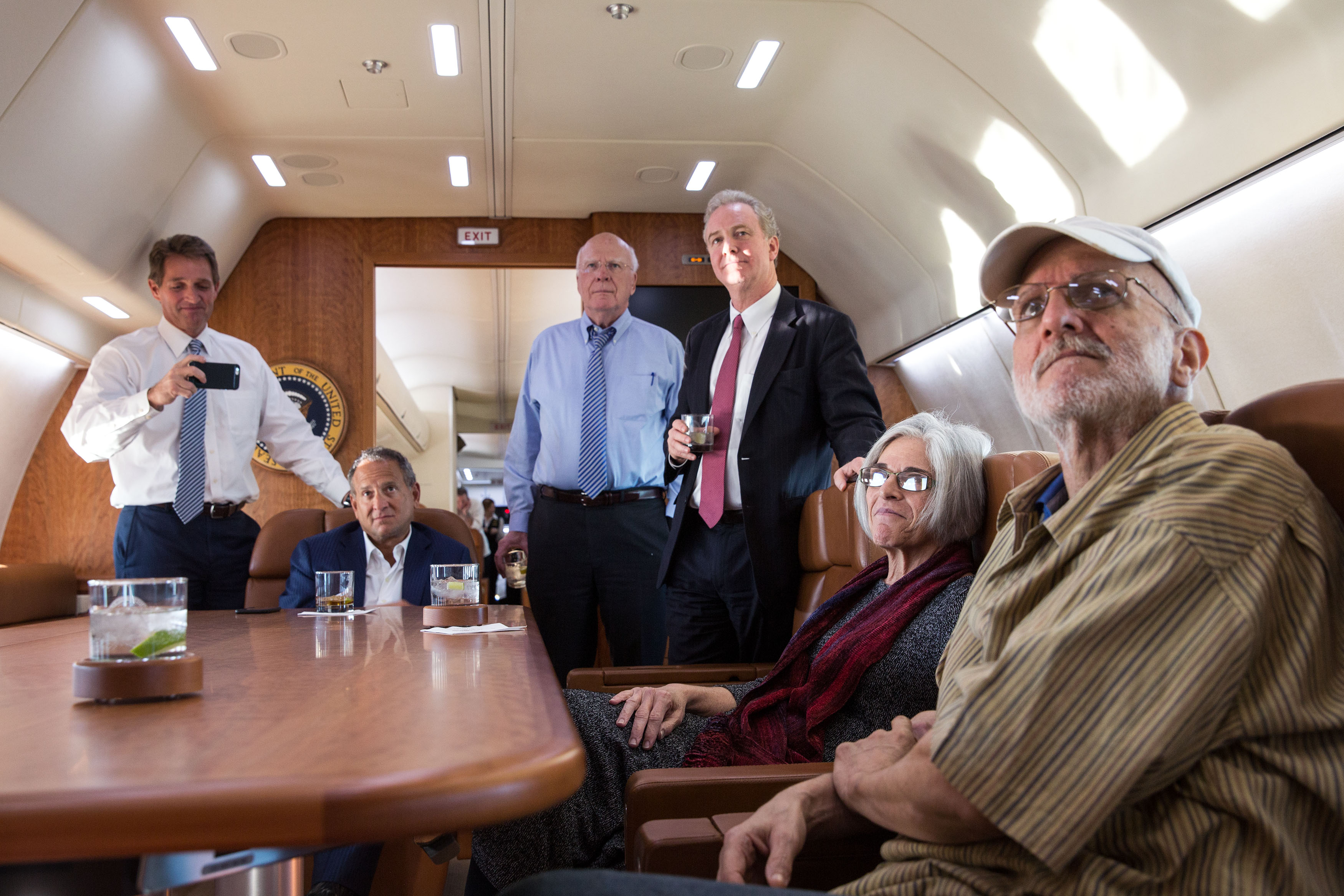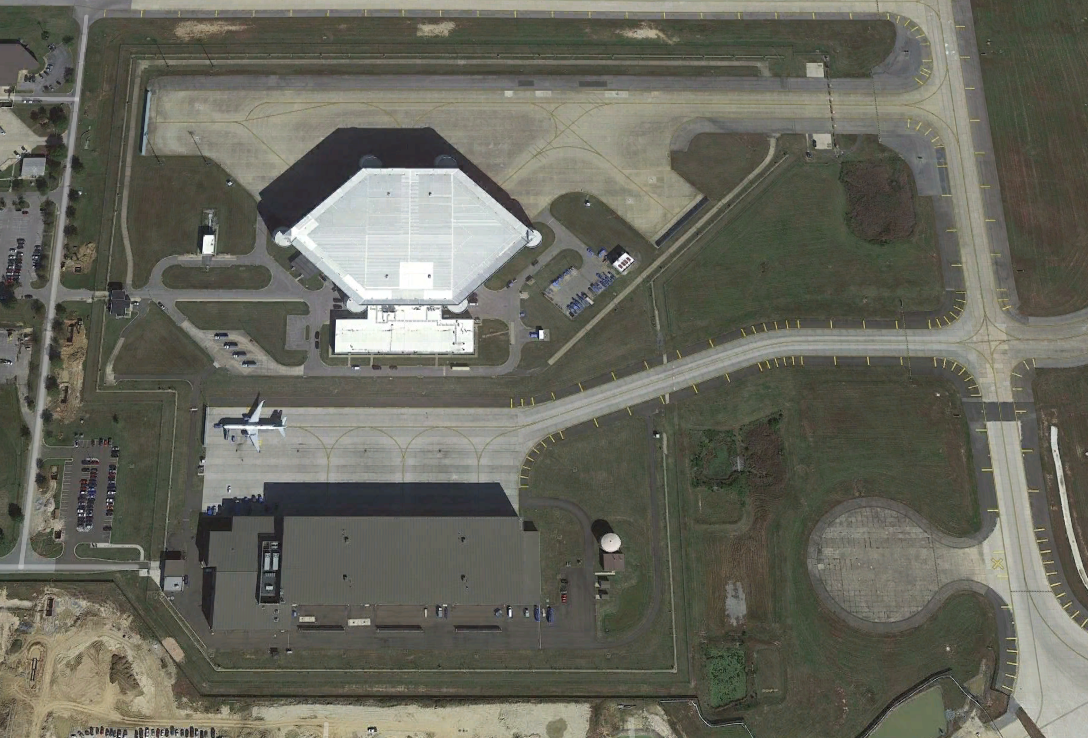
Air Force C-32 No. 90016—used for presidential transport but not officially acknowledged by service officials—lands at John Wayne Airport in Santa Ana, California, on Oct. 18, 2020. Allen J. Schaben / Los Angeles Times via Getty Images
The secret history of the Air Force One shadow fleet
Service officials do not acknowledge the existence of four of the world's most prominent Boeing 757s.
Minutes after Air Force One takes off from anywhere in the world, another blue-and-white aircraft emblazoned with “United States of America” typically follows to far less fanfare.
That’s the way the Air Force likes it. That trailing plane is one of a quartet of bespoke Boeing 757s whose existence service officials don’t acknowledge. And although the four aircraft are well known to plane spotters and aviation enthusiasts, they’re getting harder to track.
The planes’ mission is broadly understood. They fly the U.S. president to cities and towns whose airport runways are too short for the Boeing 747s more commonly associated with the Air Force One mission, and they regularly serve as backup if a larger plane breaks down.
But much remains unknown: when and why the aircraft were purchased, how much they cost, and how much taxpayer money is spent to keep them flying. Unlike other types of expensive military hardware—notably, the two 747s currently being customized to replace the three-decade-old VC-25 jets that fly the president—the four shadow planes received no public debate over their purchase and left almost no paper trail.
But there are clues. Using publicly available government, military, and contracting documents, flight tracking data, and information gathered by aviation enthusiasts and photojournalists, Defense One has assembled the most comprehensive history of this shadow fleet. It’s a rare glimpse into the secretive, and often classified, world of presidential travel and continuity-of-government operations.
The White House Military Office, which oversees the President’s air travel, deferred questions about the planes to the Air Force, which declined to comment.

Building the secret fleet
The Air Force has long operated Boeing 757s outfitted for executive travel. It designates such planes C-32As and publishes a fact sheet that acknowledges four of them. (Its special operators also fly two all-white 757s, called C-32Bs, whose existence the Air Force does not acknowledge.)
These four C-32As were ordered in 1996 from Boeing, which delivered them two years later. Before the shadow fleet existed, presidents used these planes to reach airfields too small to accommodate a 747. In April 2004, for example, George W. Bush flew one to a small regional airport in Maine. Today, they are regularly used to fly the vice president, first lady, cabinet secretaries, and other high-ranking government and military officials.
But there’s no record of the company delivering the four 757s that have been used by U.S. presidents since the mid-2010s. Boeing stopped making the 757 in 2005, which likely means the Air Force turned to the secondhand market for its secret fleet.
In February 2009, the service posted a contracting notice seeking new and used planes for flying top government officials. “These aircraft will provide domestic and worldwide team and VIP transportation,” the notice said. “This acquisition is a result of Congressional legislation as enacted in Public Law 110-417.” That law, better known as the fiscal 2009 National Defense Authorization Act, contains no explicit reference to the aircraft. But three of the four planes in the shadow fleet have registration numbers that begin with 09, signifying that they were purchased in 2009.
Until recently, the aircraft bore the tail numbers 90015, 90016, 90017, and 90018. According to FAA records, Boeing built 90015 for Ladeco, a now-defunct Chilean airline. It then flew for a Taiwanese airline before being transferred to L-3 Communications, now L3Harris Technologies, a company with a deep history of modifying commercial aircraft with high-tech military communications gear. 90016 flew for TWA and American Airlines before being sold to the Air Force. 90017 was part of Aeroméxico’s fleet.
The newest presidential C-32, 90018, began its life in Finnair’s fleet. L3 bought it sometime before 2015, when a plane spotter in Japan captured video of the plane landing at Kansai International Airport in Osaka. At the time, it had the Texas flag painted on its tail and the word “Trailblazer” on the forward fuselage. The Air Force acquired the plane in 2019, based on its registration number.
The L3Harris connection appears to be more than happenstance. According to an Air Force briefing from 2020, a company facility in Greenville, Texas, equips business jets with the Senior Leader Communications System, which a different briefing calls “a system foundational to the Presidential and executive Airlift Fleet.” Presidential aircraft need special communications gear to keep the commander-in-chief connected to the country’s nuclear arsenal.
The interiors of the planes in the shadow fleet are configured differently than the four public C-32s. But like the official planes, they are outfitted with large seats and conference tables. In 2014, President Obama sent 90016 to pick up Alan Gross, an American contractor who had been detained by the Cuban government. The Obama administration and the office of Sen. Patrick Leahy, D-Vt., posted pictures of Gross with lawmakers inside the plane.

Operations
Obama was also the first president to fly aboard one of the new shadow aircraft, in the mid-2010s. Donald Trump often used them as backdrops when addressing thousands of supporters at flightline campaign rallies in 2020.
President Joe Biden has used the planes for the short flight between Joint Base Andrews in Maryland and New Castle Airport near his home in Delaware. Earlier this month, Biden took one to South Carolina and Texas. On Monday, he used one to fly to a Martin Luther King Day event in Philadelphia.
The shadow aircraft are part of the Presidential Airlift Group, according to a 2016 Air Force document that mentions their tail numbers. The group, which also flies the Boeing 747s, is a unit of the 89th Airlift Wing, whose 1st Airlift Squadron operates the four acknowledged C-32As.
The four planes are based at Joint Base Andrews, Maryland, within the high-security Air Force One “compound.” Satellite imagery shows a hangar—known as Hangar 20—that is large enough to hold three aircraft and which was built between 2007 and 2010. Like the larger Hanger 19 next door where the two VC-25 Boeing 747s more regularly used as Air Force One are kept, special security fencing isolates the complex from the flightline. Recent satellite images show 757s parked outside the hangar.

You can’t tell the secret planes by their radio callsigns. When the president is aboard an Air Force jet, it goes by “Air Force One,” no matter the airframe. And a C-32 flying in trail duty generally uses the callsign “SAM,” for “special airlift mission,” just as the public C-32s do.
Nor can you tell by their tails anymore. Last year, the Air Force began removing the tail numbers from its transport aircraft, including the one that took Biden to Charleston and Dallas this week.
But once up in the air, the planes and their tail numbers still appear on public flight-tracking websites such as ADS-B Exchange—at least for now. The Air Force has called these types of flight tracking websites a threat to military aircraft.
“The Department of Defense considers open source flight tracking and data aggregation on our aircraft a direct threat to our ability to conduct military air operations around the world,” the Air Force said last year in a statement attributed to a “senior DoD aviation policy expert.”
It’s unclear how the shadow fleet’s performance or communications suite differs from those of the public C-32As.
“There is no aircraft in the world that can do what Air Force One can do, and certainly under the demanding circumstances under which this aircraft conducts these missions,” White House Press Secretary Josh Earnest told reporters after Obama met with the Presidential Airlift Group in 2017.
While he was talking about the 747, it’s fair to assume the shadow fleet fits that same billing.


